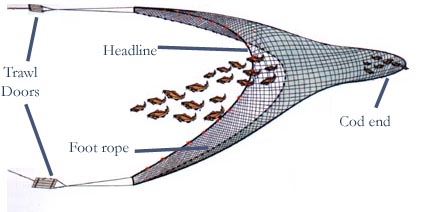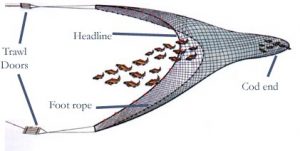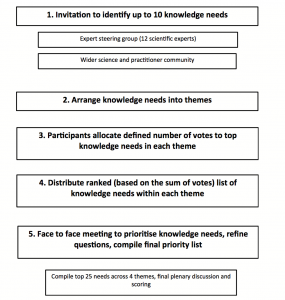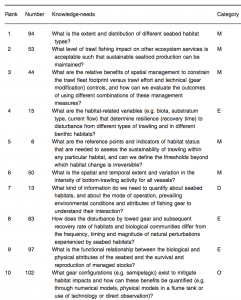Addressing knowledge gaps to utilize best practice management for bottom-trawling fisheries
By Grace Roskar, SRC Intern
Bottom-trawls are a type of fishing gear that can be destructive towards the seabed and its associated organisms. A fishing vessel tows large trawl nets that trap marine animals as they are dragged across the ocean floor. With heavy ropes, chains, or bars, the fishing gear disturbs the seabed while capturing nearly anything in its path. About 20% of fish and shellfish caught globally every year are caught using bottom-trawls, amounting to about sixteen million tons.
A meta-analysis by McConnaughey et al., in 2005 has shown that bottom trawling for benthic invertebrates may cause reductions in a decrease in biomass, the diversity of fish, and the body size of fish, among other ecological traits of fish communities. Some fish species use specific habitats for shelter or food, and it may be possible that trawling and dredging impact the productivity of these fish species. This is especially important to examine because wild-capture fisheries provide a substantial amount of food for the growing global population.
This study aimed to identify specific questions about bottom-trawling fisheries that key stakeholders feel need to be scrutinized in order to guide suitable policy and management measures. The research also sought out important gaps in global knowledge that, if taken into consideration, would help the advancement of best practice management for bottom-trawling fisheries, defined as ‘bottom trawling that would achieve sustainable fisheries production while minimizing adverse impacts on the environment’ (Kaiser et al 2015).
First, a group of 52 stakeholders from 11 different countries was selected. Stakeholders were categorized either as research scientists or practitioners, a group that comprised of people from fishing and processing industries, non-governmental organizations, or governmental organizations. The stakeholders composed a comprehensive list of ‘knowledge-needs’, which were then voted on and ranked in terms of priority. The underlying idea was that addressing these knowledge-needs would be necessary to support the development of best practice management. Through a one-day workshop, including discussion sessions and voting, a list of 25 top-priority knowledge-needs were finalized out of the original 108.
Several statistical tests were used to examine how the reasoning behind the rankings varied between practitioners and scientists. The median scores were positively correlated for each knowledge-need, showing high agreement levels between the scientists and practitioners of what was top priority. Knowledge-needs were organized into categories: direct effects, ecosystem and production, operational, and management and indicators. The management and indicators category was the most represented, with six knowledge-needs in the top ten. The highest-ranked knowledge need was ‘What is the extent and distribution of different seabed habitat types?’ Given the wide range of different stakeholders consulted, the agreement between the scientists and practitioners about the importance of this knowledge-need is encouraging. It shows the pressing need to better understand the relationship between bottom-trawling and the different habitat types affected. Furthermore, six other knowledge-needs were related to some extent to improving knowledge of the impacts of interactions between fishing gear and the seabed. The second most highly ranked question asked, ‘What level of trawl fishing impact on other ecosystem services is acceptable such that sustainable seafood production can be maintained?’ This question suggests that the environmental impacts of bottom trawling, such as changes in ecosystem structure and the fish population, need to be evaluated in comparison to the social and economic impacts of trawling.
The rest of the knowledge-needs addressed a range of topics, from the need for better understanding of where bottom trawling occurs and how much of it, to evaluating the ability of certain habitats to recover from the effects of trawling. Many knowledge-needs were additive, such that addressing one would help advancement to another. The study successfully identified specific questions that will be collaboratively discussed further to close knowledge gaps in the global fisheries industry. Future research would include continuing to examine collective knowledge and to use discussion to work towards closing knowledge gaps.
References:
Kaiser, M. J., et al. (2015). “Prioritization of knowledge-needs to achieve best practices for bottom trawling in relation to seabed habitats.” Fish and Fisheries. doi: 10.1111/faf.12134
McConnaughey, R. A., and Syrjala, S. E. Short-term effects of bottom trawling and a storm event on soft-bottom benthos in the eastern Bering Sea. – ICES Journal of Marine Science, 71: 2469–2483.







Leave a Reply
Want to join the discussion?Feel free to contribute!